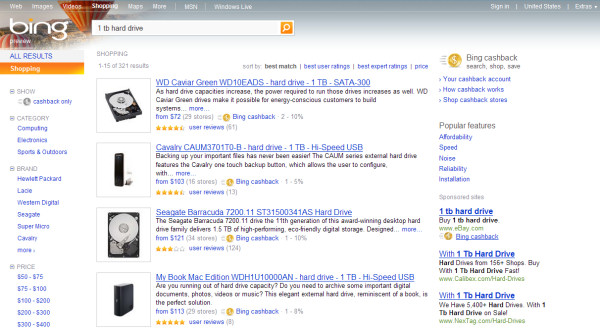
Bing vs. Google face-off, round 1
Easily the biggest single change to the way I do business over the past quarter-century -- bigger than the ubiquitousness of e-mail, bigger than the mouse, bigger than push-button piracy -- is the search engine. Google is an invaluable research tool that my colleagues and I might have invested literally thousands in to be able to use, were it available two decades ago; though in all fairness, the search engine that truly blazed the trail in functionality in the early days of the Web was AltaVista.
Even AltaVista has some unique linguistic tricks that, if they could be applied to Google's colossal index, would yield mind-boggling results; so the notion that Google cannot be bested is probably false. But this time it's Microsoft once again that's laying down the gauntlet. This time, its search engine's latest revamp sheds what some had seen as its biggest liability: its brand name's ties to Windows, as if using Windows Live Search had anything to do with using Windows. The choice of Bing as the final title indicates that most of the good dot-com names really have already been taken; but that criticism aside, Bing deserves a fair shake.
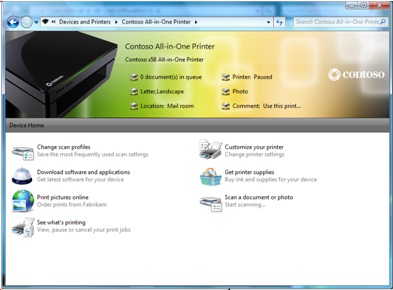
Top 10 Windows 7 Features #2: Device Stage
If the strange feeling that Vista was less secure than XP was topmost on critics' gripe lists over the last three years -- regardless of the facts which contra-indicate that feeling -- running a close second was the feeling that very little, if anything, outside of the PC worked with Vista when you plugged it in.
Here, the facts aren't all there to compensate for the feeling. Even in recent months, Palm Centro users complained about the lack of a Vista driver for connecting Centro to the PC outside of a very slow Bluetooth; Minolta scanner users were advised to hack their own .INF files with Notepad in order to get Vista to recognize their brands; and Canon digital camera owners are being told by that company's tech support staff that Microsoft was supposed to make the Vista drivers for their cameras, but didn't.
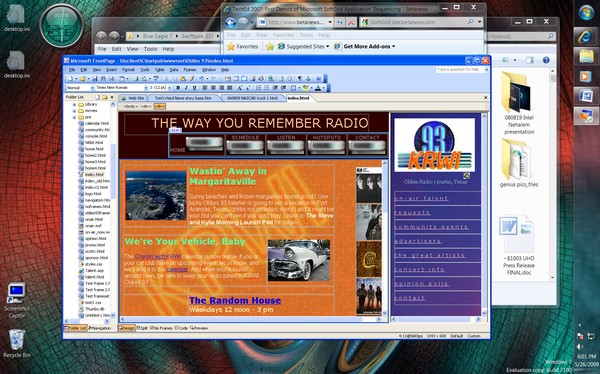
Top 10 Windows 7 Features #3: XP Mode
In some ways, Steve Ballmer is proving to be a more capable Microsoft CEO than Bill Gates, especially recently. Whereas Gates' strategies have typically been associated with playing unfair, rewriting the rules, and being blatantly defiant about it in the process, Ballmer's strategy of taking away the argument -- eliminating the appearance of advantage and then still winning -- has been more effective, and more difficult to combat in both the marketplace and the courtroom.
Nowhere does the "Playing Too Fair" strategy make a bigger display of itself in Microsoft's favor than in its latest permutation of virtualization technology -- a move that many individuals (myself included) directly suggested the company should do, and the company then did. Since 2004, Microsoft has offered a no-cost way for users to run Windows XP in a kind of hosted envelope, one which users were delighted to discover worked fairly well in Windows Vista. But it didn't offer any real advantages -- to use a program that relied on XP, you had to work within that envelope, using networking tools to associate two machines running on the same CPU.
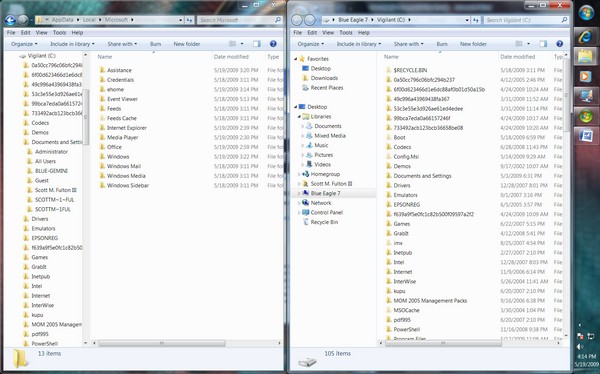
Top 10 Windows 7 Features #4: A worthwhile Windows Explorer
Over the last few decades of Windows' existence, Microsoft has wrestled with the problem of how much control it should give users over the arrangement and organization of files on their computers. In a perfect world, users shouldn't have to care about their \Windows\System32 or \Windows\SysWOW64 directories, so a good file manager shouldn't make the mistake of exposing users to information they don't know how to deal with. On the other hand, knowledgeable users will need to have access to system directories in such a way that they don't have to jump through hoops to find them.
It is a balancing act, but not an impossible one. Over the years, third-party file management utilities such as Total Commander and xPlorer2 have been among the most popular software downloaded through Betanews Fileforum. Granted, these are typically installed and used by folks who know such bits of trivia as the fact that the \Application Data\Local Settings\Microsoft\Office folder in Windows XP maps to the \AppData\Local\Microsoft\Office folder in Windows Vista. But the reason they're popular with folks such as myself is because we need more direct and comprehensive access to the systems we manage. What's more, we commonly need access to two directories at once, and it makes more visual sense to have them both open.

Top 10 Windows 7 Features #5: Multitouch
For close to two decades now, the design of applications has changed surprisingly very little. At their core, apps wait for users to generate input, and they respond -- a server/client model of processing on a very local scale. So in a very real way, what applications do has been a function of how they respond -- the whole graphical environment thingie you've read about has really been a sophisticated way to break down signals the user gives into tokens the application can readily process.
The big roadblock that has suspended the evolution of applications from where they are now, to systems that can respond to such things as voice and language -- sophisticated processes that analyze input before responding to it -- is the token-oriented nature of their current fundamental design. At the core of most typical Windows applications, you'll find a kind of switchboard that's constantly looking for the kinds of simple input signals that it already recognizes -- clicking on this button, pulling down this menu command, clicking on the Exit box -- and forwarding the token for that signal to the appropriate routine or method. Grafting natural-language input onto these typical Windows apps would require a very sophisticated parser whose products would be nothing more than substitutes for the mouse, and probably not very sufficient substitutes at that.
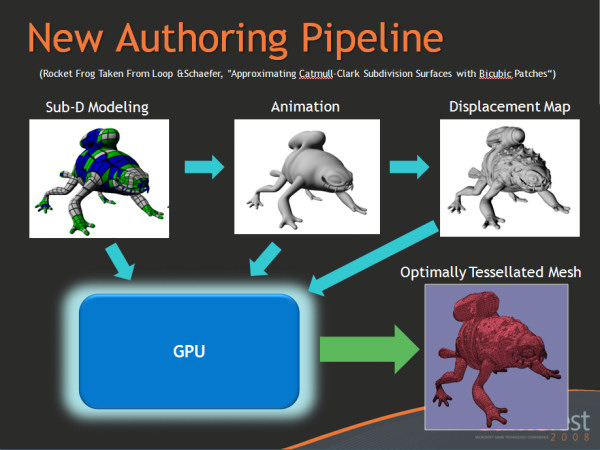
Top 10 Windows 7 Features #6: DirectX 11
Early in the history of Windows Vista's promotional campaign, before the first public betas, Microsoft's plan was to create a desktop environment unlike any other, replete with such features as 3D rendered icons and buttons, and windows that zoomed into and off the workspace as though they occupied the space in front of the user's face. That was a pretty tall order, and we expected Microsoft to scale back from that goal somewhat. But for several months, journalists were given heads-up notices that there would be several tiers of Windows performance -- at one point, as many as five -- and that the highest tier, described as a kind of desktop nirvana, would be facilitated by the 3D rendering technology being called DirectX 10.
DirectX is a series of graphics libraries that enable Windows programs to "write" graphics data directly to screen elements, rather than to ordinary windows. While the operating system's principal graphics library since version 3.0 has been the Graphics Device Interface (GDI), its handles on memory are tied to window identities and locations. But it's DirectX that makes it possible for a 3D rendered game to be played in the Windows OS without having to be "in" a window like, say, Excel 2003.
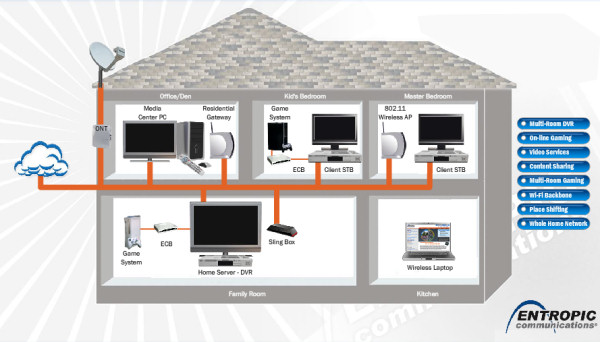
Top 10 Windows 7 Features #7: 'Play To' streaming media, courtesy of DLNA
Perhaps you've noticed this already: Getting media to play in a Windows-based network is a lot like siphoning water from a pond using a hose running uphill. If you can get enough suction, enough momentum going, you can get a decent stream, but there are way too many factors working against you. Foremost among these is the fact that you're at the top of the hill sucking through a hose, rather than at the bottom pushing with a pump.
So home media networking is, at least for most users today, precisely nothing like broadcasting whatsoever. That fact doesn't sit well with very small networked devices like PMPs, digital photo frames, and the new and burgeoning field of portable Wi-Fi radios like Roku's SoundBridge. Devices like these don't want or even need to be "Windows devices;" and what's more, they don't want to be the ones negotiating their way through the network, begging for media to be streamed uphill in their general direction. They want to be plugged in, shown the loot, and told, "Go." Back in 2004, a group of networked device manufacturers -- the Digital Living Network Alliance (DLNA, and yes, it's another network association) -- coalesced with the idea of promoting a single standard for being told "Go." But up until today, there hasn't been a singular, driving force uniting the standards together, something to look up to and follow the way Web developers followed Internet Explorer.
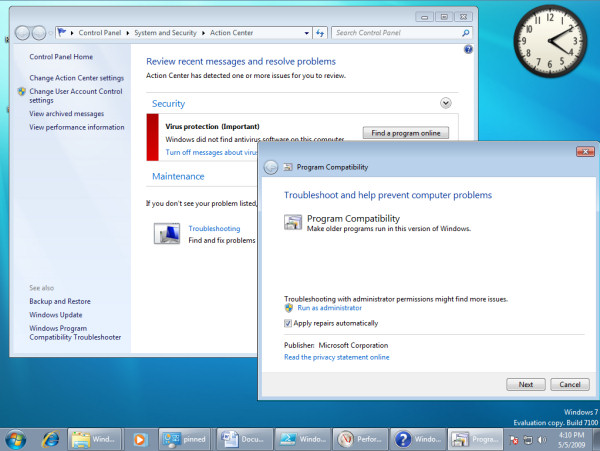
Top 10 Windows 7 Features #8: Automated third-party troubleshooting
Among the stronger and more flourishing cottage industries that have sprouted forth as a result of Microsoft Windows has been documenting all of its problems. One of the most successful of these efforts has been Annoyances.org, which sprouted forth from "Windows Annoyances" -- much of what Internet publishers have learned today about search engine optimization comes from revelations directly gleaned from the trailblazing work of Annoyances.org. Imagine, if you will, if the instructions that Annoyances.org painstakingly gives its readers for how to eradicate those little changes that Microsoft makes without your permission, were encoded not in English but instead in a language that Windows could actually execute on the user's behalf.
Windows 7 is actually making such an environment -- a system where, if you trust someone else other than Microsoft to make corrections to your system, you can accept that someone into your circle of trust and put him to work in Troubleshooting. Can't make that Wi-Fi connection? How do you test for the presence of other interfering signals? Streaming media suddenly get slow, or running in fits and starts? Maybe there's an excess of browser-related processes clogging up memory and resources. Did something you just install cause Flash not to work in your browser? Maybe you don't have time to check the 36 or so places in the Registry where that something altered your file associations.
Top 10 Windows 7 Features #9: Native PowerShell 2.0
Ever since the command-line tool code-named Monad escaped by the skin of its fingernails from Microsoft's laboratories in 2006, there has been debate and dispute over whether the company has finally, once and for all, replaced DOS. Since that time, we've seen the arrival of an entirely new generation of Windows users who believe "DOS" is an acronym for "denial of service," and who are baffled as to the reasons why anyone would want to command or control an operating system using text.
It isn't so much that text or command-line syntax is the "old" way of working and that Microsoft Management Console is the "new" way. As Microsoft discovered, to the delight of some in its employ and the dismay of others, using the command line as the fundamental basis for Exchange Server improved its usability and efficiency immensely. The graphical environment simply does not translate well -- or to be fairer, not effectively -- to the task of administration.
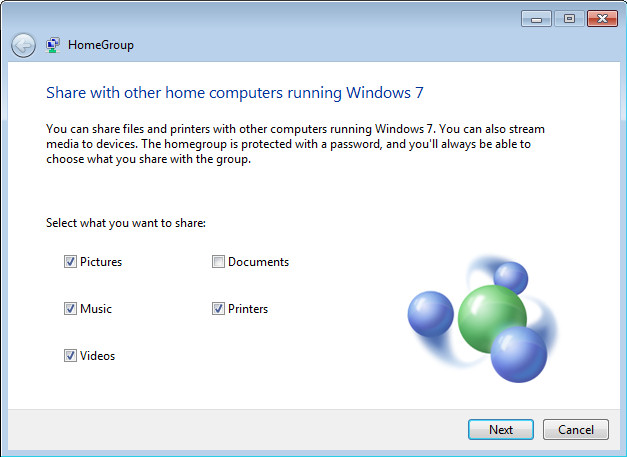
Top 10 Windows 7 Features #10: Homegroup networking
Beginning now, Betanews is going to get a lot more intimate with technology than you've seen us before, particularly with Microsoft Windows 7 now that it's becoming a reality. Next Tuesday, the first and probably only Release Candidate of the operating system will become available for free download.
It's probably not so much a testing exercise as a colossal promotional giveaway, a way to get Windows 7 out in the field very fast...and use that leverage to push Vista out of the way of history. So much of what you'll see in the Release Candidate in terms of underlying technology is finalized; any tweaks that will be done between now and the general release date (which PC manufacturer Acer blabbed last night will be October 23) will likely be in the looks department.
